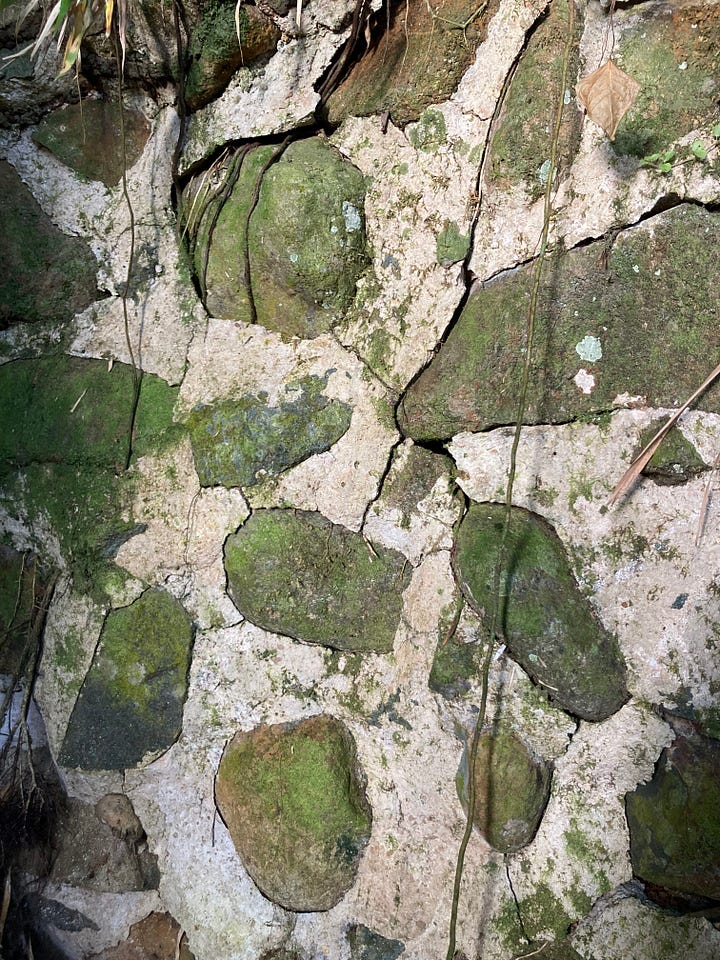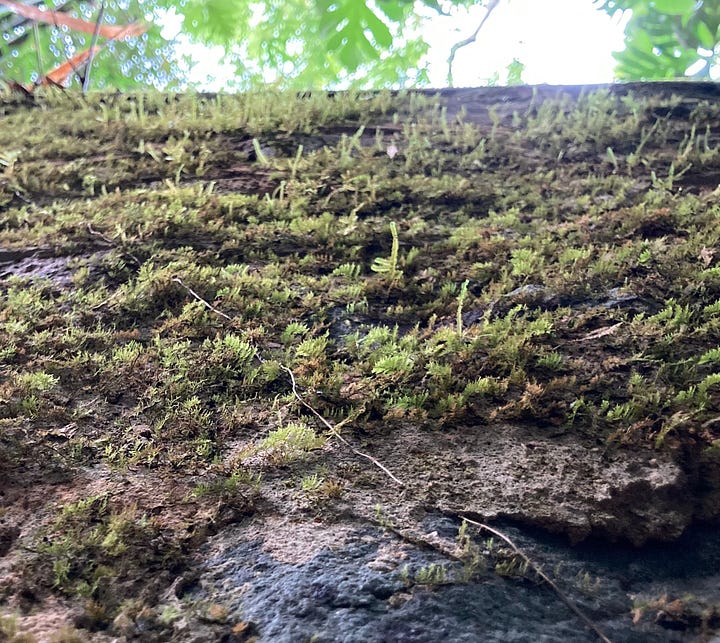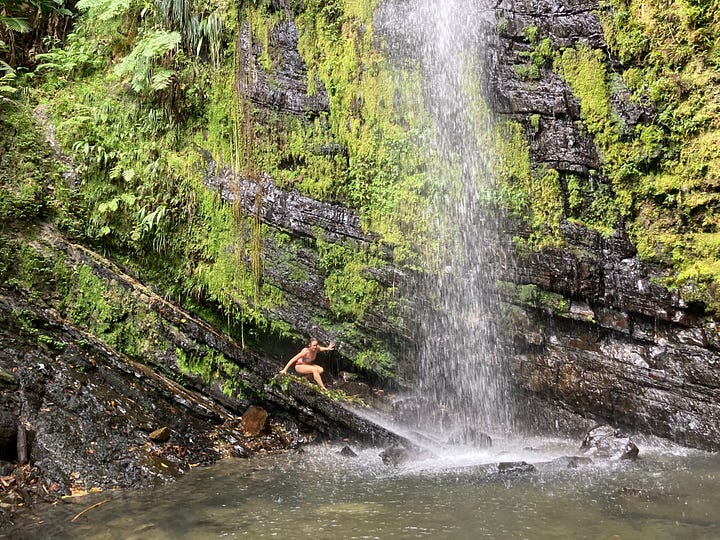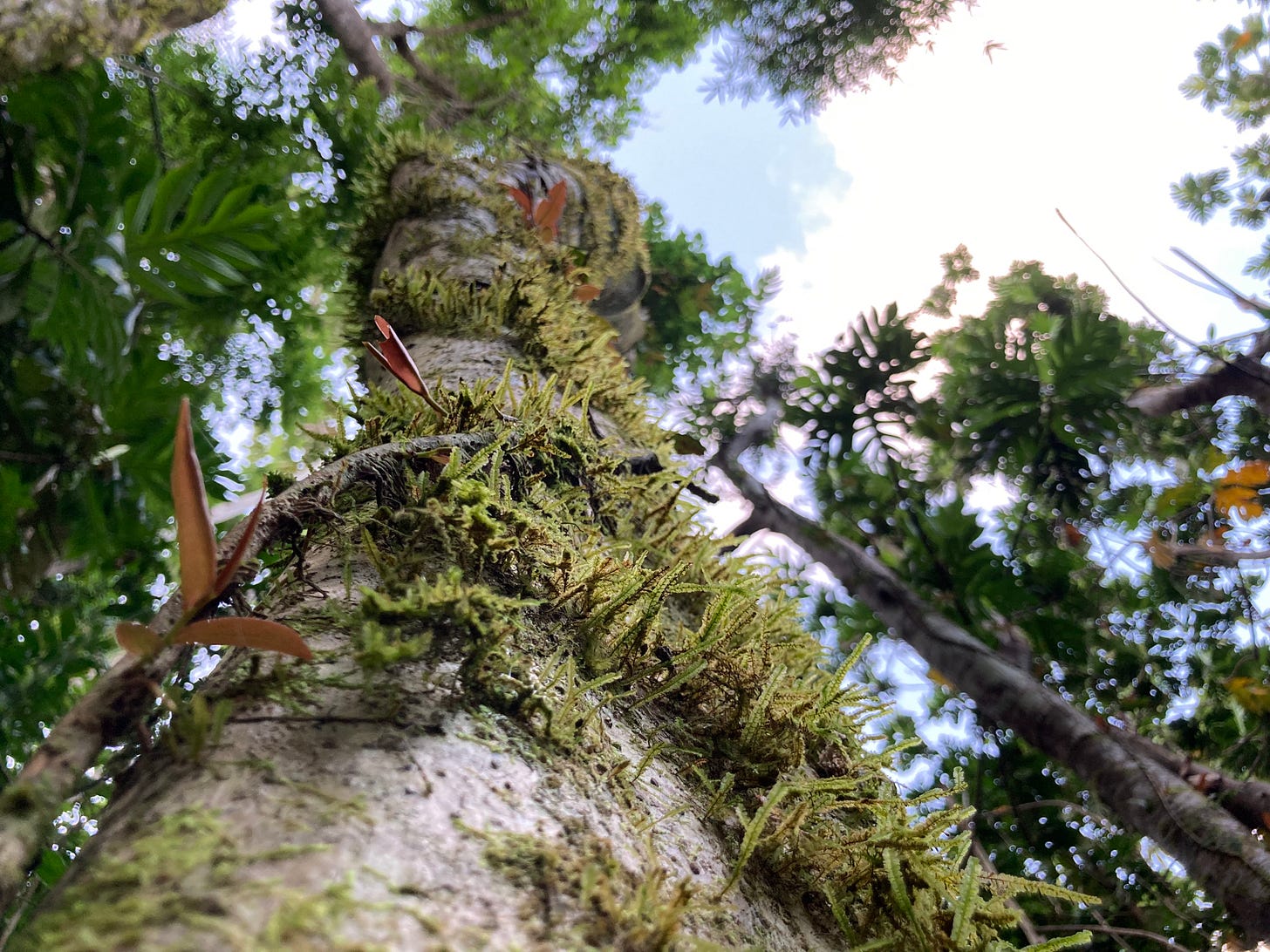Sometimes I do this little visualization/affirmation in which I imagine a carpet of emerald moss covering a fallen log in the woods.
I am fertile
I am generative
I repeat to myself, countering the oppression of my creativity + hormone imbalances + sexual trauma & repression that have made me feel the opposite. I see the kaleidoscope of greens in my mind’s eye. Through my imagination I embody the lushness, feel it, let it be a reflection and reminder of my own vibrant creative power.
Moss has become my ultimate nature image of fertility thanks to Robin Wall Kimmerer’s (Potawatomi and author of Braiding Sweetgrass — another fave!) lesser-known book, Gathering Moss: A Natural and Cultural History of Mosses. It was in these pages that I learned that moss creates soil where there was none before, often by very slooowly eroding the rock surfaces it clings to. Over time, it generates a fertile bed for seeds of other plants to sprout, a foundation for life.
It’s been doing this for about 450 million years.
Moss is our founding mother. She is the first “colonist” of our lands.
As Kimmerer writes in her 2022 essay, Moss, Climate and Deep Time (which all italicized sections in this piece have been pulled from):
These courageous pioneers had to unlearn the ways of their algal ancestors—who were used to an easy life bathed in water and nutrients—and withstand the harsh conditions of dry land. The colonists evolved means of holding water and scavenging minerals from bare rock with their membrane-thin leaves.
These brave new beings were the mosses, who 450 million years ago began a great experiment in evolution, the challenge of living on the land, an experiment of which we are all a part, a story whose ending is unwritten.
Moss’s way of colonizing is the opposite of what we think of when we hear that word; rather than endlessly exploiting, extracting and erasing others in order to exist, mosses come humbly bearing gifts. They take no more than what they need — next to nothing — and create the conditions for diverse creatures to thrive. They give everything simply by being.
Mosses make minimal demands on their surroundings. All they need is a little light, a sheer film of water, and a thin decoction of minerals, delivered by rainwater or dissolution of rock.
…On the surface of a rock, they simply live, gathering life to them with an egoless beauty.


Here they are, still, 450 million years later. Life gathering life.
Mosses are able to exists on every continent in nearly every habitat on earth, desert to rainforest, because of their intimate relationship with water — particularly droplets, as they don’t have roots.
Their thin leaves, just one cell thick, overlap one another like shingles, and each miniscule leaf is sculpted with nubs and grooves and frilly hairlike extensions to hold a film of water by capillary action. The whole architecture of a moss fosters the love affair between leaf and water, the physicochemical attraction of water for cellulose, in order to hold water close.
In the desert, mosses can thrive off of morning dew alone. And when there is none, they can suspend life itself, ceasing to grow until water is restored to the environment.
They don’t die, they just crinkle up and pause, following the rhythms of the natural world, growing in periods of abundance and waiting through periods of scarcity: a wise strategy for life that is in tune with uncertainty.
Seeing their ability to so effectively hold water (some species are twice as absorbent as cotton), Indigenous peoples used it as the original diaper and pad. Moss is also antimicrobial, soft and insulating. How utterly perfect for those most tender parts of us women and little ones! A plush, living (and sanitary) embrace.


One of my favorite stories in Gathering Moss is one in which Kimmerer recounts hours spent in the woods with a grad student staring at leaf litter, bits of moss and conducting experiments including racing slugs with beer as the incentive (to determine how far and fast they carried moss spores). They’re attempting to understand why a certain type of moss colonizes the sides of fallen trees while another is able to thrive on the tops. Thanks to a drop of peanut butter from her lunch, Kimmerer finds an answer: chipmunks.

Have you watched them navigate through the woods along fallen trees? They follow the path of least resistance, as we humans might follow an elevated boardwalk through a swamp. And as the chipmunks scamper and skid, their little clawed toes clear spots on the tops of logs, a perfect landing place for the moss spores that drop from their fur.
🤯
This book forever changed how I see the zillions of infinitely complex and ever-changing ecosystems that make up what we simply call “the woods.”
Kimmerer shares that in Anishinaabe languages, moss is called aasaakamig and aasaakamek, which means “those ones who cover the earth.”
They cover the inanimate with the animate. Without judgment, they cover our mistakes, with an unconditional acceptance of their responsibility for healing… They will cover the abandoned frack pads with the same tenderness as the bare rubble of a melted glacier.
She talks of her longing for a wise elder, a teacher, in this time of climate crisis. She urges us to look to mosses.
If plants are our teachers, then the aasaakamek are our very oldest teachers. At the time of the sixth extinction, might we stop wringing our hands long enough to sit quietly at the feet of the ones who have avoided every era of extinction since the dawn of life on land?







Thanks Katherine, makes me want to rest in it's soft embrace. Definitely going to read that book, I just finished her Braiding Sweetgrass which was beautiful and had tears falling for the love of plants
Beautiful, Katherine!